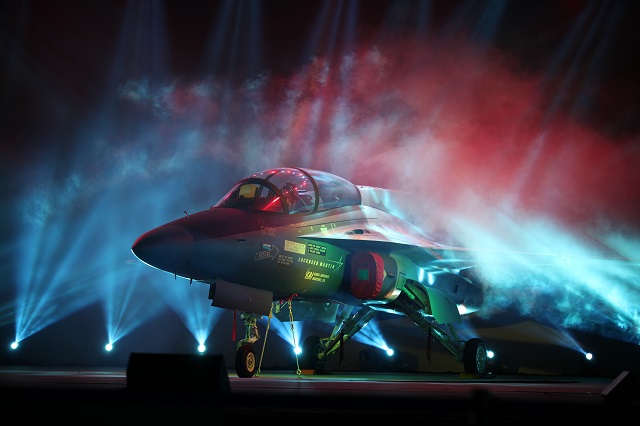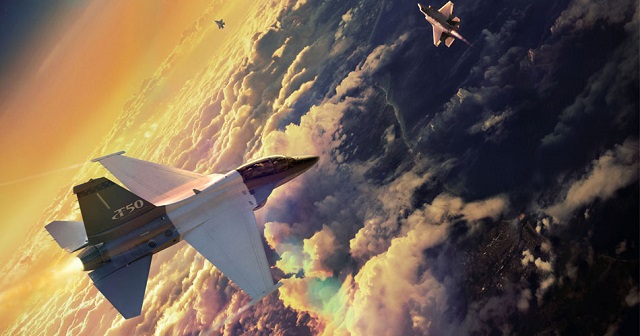Lockheed Martin has yet to reveal its “ultimate offering” for the US Air Force's hotly contested advanced pilot training competition despite joining Korea Aerospace Industries in the unveiling of its possible T-50 Golden Eagle-based T-X proposal in South Korea this week.
Earlier this year, the company disclosed that its Skunk Works advanced design and development division had also been working on a clean-sheet alternative as a back-up if the air force’s performance specifications for the next-generation replacement for the 55-year-old Northrop T-38 evolve.
Although Lockheed’s long-term relationship with Korea through the country’s indigenous T-50 programme has been expected to form the basis for its T-X offering, Skunk Works declines to confirm that the clean-sheet offer is off the table for the $8 billion new-build trainer contest.
The unveiling at KAI’s Sacheon facility came as somewhat of a surprise, with no advanced notices sent to aerospace reporters by either company, and no Lockheed press release. The event was attended by a mostly South Korean audience, including the country's president Park Guen-Hye.
A KAI-Lockheed T-X demonstrator based on the T-50 "Golden Eagle" was unveiled this week in Korea. But what about the clean-sheet alternative Skunk Works discussed earlier this year?
KAI
The high-profile event stands in stark contrast to Northrop Grumman’s muted unveiling of its T-X design to reporters in Palmdale, California, last week, where a mock-up of a slightly T-38-looking aircraft was revealed for about 90s.
Boeing Phantom Works president Darryl Davis also kept talk of T-X to a minimum during a discussion with Flightglobal this week, declining to say when the joint Saab-Boeing design would fly.
Flightglobal specifically asked Lockheed Skunk Works this week if it intends to continue developing its clean-sheet alternative to the T-50, particularly if the KAI aircraft does not offer the best chance of capturing the multibillion-dollar opportunity. Skunk Works was also asked if it intends to produce a flying prototype or demonstrator of its alternative design.
In response, it says the T-50 is a proven, low-risk platform that has already trained more than 1,000 pilots, but declines to name T-50 as the company’s final offering for T-X.
The air force released the full requirements for its T-X programme earlier this year, and continues to engage with industry about which attributes are most important for the competition.
“We remain focused on delivering a low-risk, advanced pilot training solution to the US Air Force,” it says. “We will provide more details about our ultimate offering in the air force’s advanced pilot training competition at the appropriate time next year.”
It also declines to detail the maturity level of the clean-sheet design. "Our competitors would love to know the answer to that question," it says.

Lockheed says the T-50 advanced jet trainer has been designed from the start to prepare pilots for fifth-generation aircraft.
Lockheed Martin
The air force expects to release its final T-X request for proposals in 2017, with the ultimate goal of replacing more than 350 T-38 aircraft that have been in service since the 1960s.
Alenia Aermacchi has also expressed interest in offering its T-100 for the T-X requirement, which is for a high-performance aircraft to support pilot transition to the fifth-generation Lockheed F-22 and F-35.
According to KAI, the company expects to fly its T-50 demonstrator in 2016 with further flight tests planned in the USA in 2017. The company is optimistic that a win on the T-X programme will also boost its trainer's appeal abroad.
Source: FlightGlobal.com



















